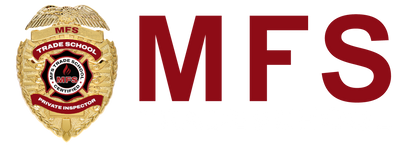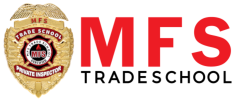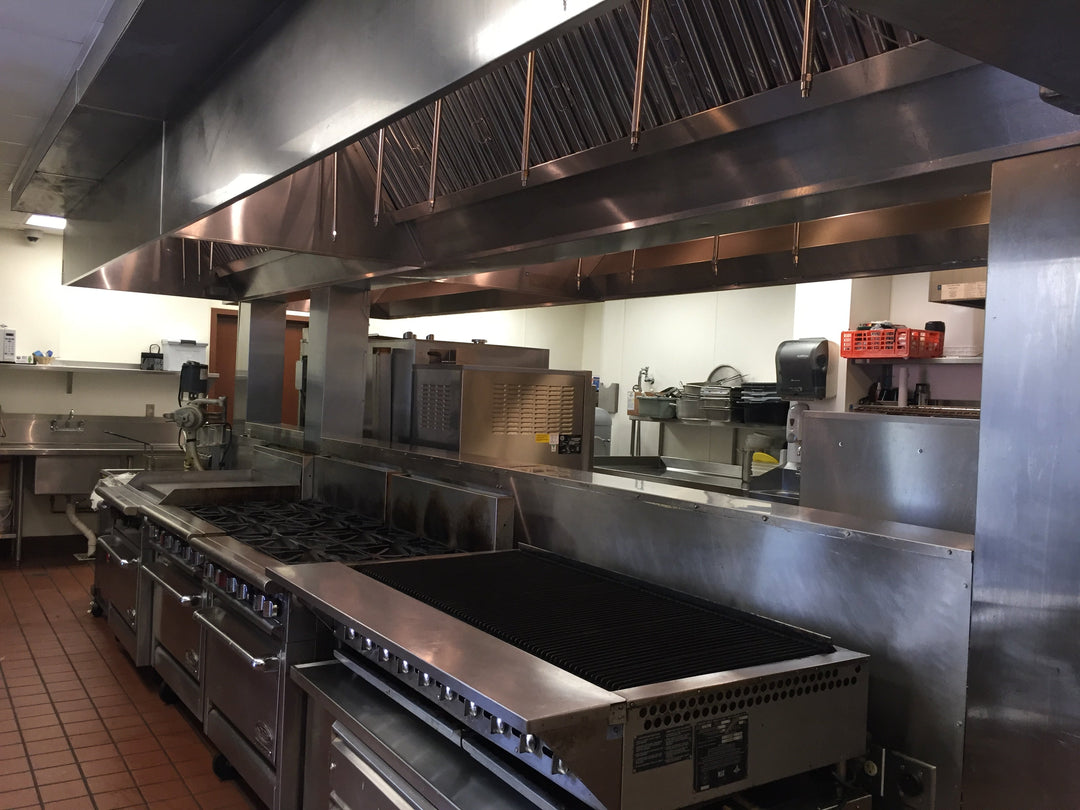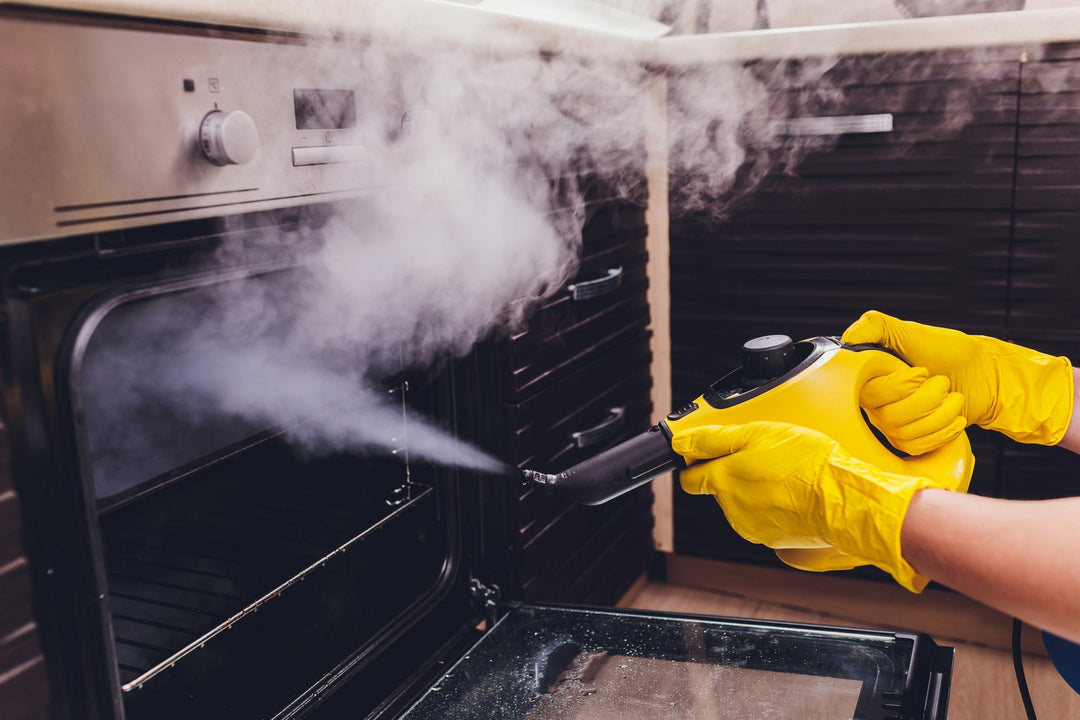Did You Know You Can Launch a Kitchen Exhaust Cleaning Business in Just 90 Days?

Starting a kitchen exhaust cleaning business represents a lucrative opportunity in the commercial cleaning industry. This essential service keeps restaurants safe, compliant, and operational, creating steady demand and reliable income potential for skilled service providers.
The kitchen exhaust cleaning market offers:
-
Consistent Revenue Stream: Regular cleaning requirements create a recurring business
-
Low Competition: Specialized skill set limits market saturation
-
High Profit Margins: Premium service commands professional rates
-
Quick Start Potential: Launch-ready in 90 days with proper training
A well-structured kitchen exhaust cleaning business can achieve profitability within 90 days through strategic planning and efficient execution. The path to success includes proper certification, equipment acquisition (such as essential Exhaust Hood Cleaning equipment), and targeted marketing to restaurant owners.
Key Success Factors:
-
Professional certification obtained from trade schools bridging America's skills gap
-
Industry-standard equipment
-
Safety compliance knowledge
-
Client relationship building
-
Strategic service scheduling
The demand for qualified kitchen exhaust cleaners continues to grow as restaurants face strict safety regulations and insurance requirements. This guide outlines the essential steps to establish your business in this profitable sector, demonstrating how you can transform industry expertise into a sustainable enterprise within three months.
To get a clearer understanding of the kitchen exhaust cleaning process, including debunking some common myths about kitchen hood cleaning, you'll find valuable insights that can aid your journey in this industry. Furthermore, understanding the significance of cooking oil filtration can also provide an added advantage as it's a vital component in the restaurant industry.
Understanding the Kitchen Exhaust Cleaning Business
Commercial kitchen exhaust cleaning is an essential safety service in the food service industry. Grease buildup in kitchen exhaust systems poses significant fire risks, endangering restaurants, employees, and customers. According to the National Fire Protection Association (NFPA), 57% of restaurant fires start from cooking equipment, with insufficient cleaning being a major contributing factor.
Legal Requirements and Safety Standards
Compliance with various legal requirements and safety standards is crucial for kitchen exhaust cleaning businesses. These include:
-
Following NFPA 96 Standards that mandate regular cleaning schedules
-
Adhering to local health department regulations requiring maintenance documentation
-
Meeting insurance companies' demands for compliance with cleaning protocols
-
Undergoing routine inspections by fire marshals for safety verification
Cleaning Frequency Guidelines
Different types of restaurants have varying cleaning frequency requirements based on their operations:
-
High-volume restaurants (24/7 operations): Monthly cleaning
-
Standard restaurants: Quarterly cleaning
-
Light-duty operations: Semi-annual cleaning
The average time taken to clean a kitchen exhaust system is 3-4 hours for a standard setup, while larger installations may require up to 8 hours. The cost of each service typically falls within the range of $400-$1,200, depending on factors such as system size and complexity.
Key System Components Requiring Regular Maintenance
To ensure optimal performance and safety, specific components of the kitchen exhaust system need regular maintenance:
-
Hood filters and grease collection cups
-
Horizontal and vertical ductwork
-
Exhaust fans and roof areas
-
Access panels and inspection points
Kitchen exhaust cleaning businesses primarily operate during off-peak hours, usually between 10 PM and 6 AM. This schedule minimizes disruption to restaurant operations while allowing for thorough cleaning and inspection of the system without interfering with food service.
For effective kitchen exhaust hood cleaning, it's essential to use specialized equipment such as a hood degreaser.
Service Documentation Requirements
Proper documentation is vital in the commercial kitchen cleaning industry to maintain transparency and accountability. The following documents should be prepared after each service:
-
Before and after photographs
-
Detailed cleaning reports
-
Maintenance recommendations
-
Compliance certificates
The commercial kitchen cleaning industry is experiencing steady growth due to increasing food safety regulations and expansion in the restaurant sector. Health departments and fire safety officials are continuously strengthening enforcement measures, creating consistent demand for professional exhaust cleaning services.
Starting a hood cleaning business can be a rewarding venture for entrepreneurs seeking stable opportunities. It requires understanding costs, training, and certification requirements, which are crucial for success in this field. Aspiring business owners can benefit greatly from mentorship in navigating these challenges effectively.
Essential Steps to Start Your Kitchen Exhaust Cleaning Business
Starting a kitchen exhaust cleaning business requires strategic planning and specific qualifications. Here's what you need to launch your venture:
Professional Certification Requirements
These certifications demonstrate your expertise and commitment to safety standards, building trust with potential clients and insurance providers.
-
State-specific licenses
-
Local health department certifications
Training Programs and Education
Phil Ackland's Kitchen Hood Cleaning School stands as a premier training resource, offering:
-
Comprehensive curriculum covering: NFPA 96 standards implementation
-
Local fire code compliance
-
Safety protocols
-
Equipment handling techniques
-
Business operations management
Hands-on Experience Requirements
Practical experience is crucial for service quality and efficiency:
-
Required practical skills: Hood system component identification
-
Proper cleaning techniques
-
Equipment maintenance procedures
-
Safety protocol implementation
-
Time management strategies
Effective Sales Strategies
Direct Marketing Approaches:
-
Cold calling restaurants during off-peak hours
-
Door-to-door business card distribution
-
Local restaurant association networking
-
Partnership building with equipment suppliers
Digital Marketing Tactics:
-
Professional website development
-
Social media presence
-
Email marketing campaigns
Business Development Focus Areas
Client Acquisition Strategy:
-
Target high-volume restaurants
-
Build relationships with facility managers
-
Create referral programs
-
Develop competitive pricing models
Service Quality Enhancement:
-
Regular equipment updates, such as investing in an MFS Electrostatic Misting Fogger for efficient cleaning
-
Team training programs
-
Quality control measures
-
Customer feedback systems
Your success in the kitchen exhaust cleaning industry depends on maintaining high service standards while continuously expanding your client base. Regular investment in training and equipment upgrades ensures your business stays competitive and compliant with industry regulations.
Additionally, understanding the importance of regular kitchen exhaust cleaning can significantly improve health ratings and keep kitchens compliant with health department standards. Furthermore, implementing effective hood cleaning strategies can prevent fire hazards, promoting a safer kitchen environment. Lastly, regular equipment maintenance is crucial for boosting efficiency, reducing downtime, and saving on costly repairs.
Choosing the Right Equipment and Setting Up Your Business Operations
Proper equipment selection stands as a critical foundation for your kitchen exhaust cleaning business's success. A strategic partnership with established suppliers like PowerWash.com, which provides access to professional-grade equipment and expert guidance for your startup needs, can greatly enhance your chances of success.
Essential Equipment Checklist:
-
High-pressure washing system (3000-4000 PSI)
-
Chemical sprayers and degreasers
-
Scrapers and brushes in various sizes
-
Wet/dry vacuum systems
-
Portable lighting equipment
-
Extension ladders and work platforms
-
Transportation vehicle (van or truck)
Required Safety Gear:
-
OSHA-approved respirators
-
Chemical-resistant gloves
-
Non-slip safety boots
-
Eye protection
-
Fire-resistant coveralls
-
Hard hats
-
Fall protection equipment
Your initial equipment investment typically ranges from $15,000 to $25,000, depending on new versus used equipment choices. This investment covers the essential tools needed to handle standard commercial kitchen cleaning jobs.
Business Operations Setup:
-
Secure a dedicated storage space for equipment
-
Create maintenance schedules for tools
-
Establish cleaning protocols
-
Set up inventory management systems
-
Implement equipment tracking procedures
Mobile Operations Requirements:
-
Vehicle organization systems
-
Secure chemical storage
-
Equipment mounting solutions
-
Water tank installations
-
Power supply systems
The quality of your equipment directly impacts service delivery and client satisfaction. Professional-grade tools enable efficient cleaning operations, reduce job completion time, and ensure consistent results across different kitchen configurations.
A systematic approach to equipment organization and maintenance prolongs tool life and maximizes return on investment. Regular equipment inspections and prompt repairs prevent costly downtime and maintain operational readiness for client services.
In addition to traditional cleaning, it's essential to adopt advanced virus disinfection techniques in commercial kitchens. Implementing effective cleaning protocols not only protects customers but also ensures compliance with health regulations.
Marketing Your Kitchen Exhaust Cleaning Services and Managing Client Relationships
Strategic marketing drives success in the kitchen exhaust cleaning industry. A targeted approach helps attract high-value clients and build lasting relationships with restaurant owners.
Direct Marketing Strategies
-
Cold calling local restaurants with personalized pitches
-
Door-to-door visits during off-peak hours
-
Professional business cards and brochures highlighting fire safety benefits
-
Local business directory listings
-
Targeted social media advertising on platforms like Facebook and LinkedIn
Digital Presence Development
-
Professional website showcasing services and certifications
-
Client testimonials and case studies
-
Regular blog posts about kitchen fire safety
Building Restaurant Partnerships
-
Customized cleaning schedules based on kitchen volume
-
Flexible payment terms for regular clients
-
Emergency service availability
-
Detailed inspection reports after each cleaning
-
Proactive maintenance recommendations
Value-Added Services
-
Free initial consultations
-
Fire safety compliance checks
-
Staff training on daily hood maintenance
-
Quarterly inspection reminders
-
Referral reward programs
Pricing Strategy
-
Competitive market analysis
-
Transparent pricing structure
-
Volume-based discounts
-
Annual service contracts
-
Seasonal promotional rates
Client Retention Techniques
-
Regular follow-up calls
-
Satisfaction surveys
-
Birthday/anniversary acknowledgments
-
Priority scheduling for loyal customers
-
Early renewal incentives
Professional Network Development
-
Join local restaurant associations to understand essential cleanliness tips from health inspectors, which can greatly enhance your service offering.
-
Partner with fire safety inspectors to ensure compliance and safety in all operations.
-
Connect with equipment suppliers for better service delivery.
-
Build relationships with health department officials to stay updated on regulations.
-
Network with other kitchen service providers to share best practices and referrals.
In the same way that a life-changing loaf of bread can transform a meal, your kitchen exhaust cleaning services can significantly improve the safety and efficiency of a restaurant's kitchen.
Navigating Legal Requirements and Optimizing Your Operations for Success
Essential Insurance Coverage
Ensure your business is adequately protected with the following insurance policies:
-
General Liability Insurance: Protects against property damage claims
-
Workers' Compensation: Required when hiring employees
-
Commercial Auto Insurance: Covers business vehicles
-
Professional Liability Insurance: Guards against negligence claims
-
Equipment Insurance: Safeguards your investment in cleaning tools
Strategic Night Operations
Operating during off-hours creates multiple advantages for your kitchen exhaust cleaning business:
-
Reduced restaurant disruption
-
Access to empty kitchens
-
Faster cleaning process
-
Higher client satisfaction rates
-
Increased safety due to cooled equipment
Seasonal Planning for Revenue Optimization
Peak seasons vary by region and restaurant type:
-
Summer: Tourist locations, outdoor dining venues
-
Winter: Indoor dining establishments
-
Holiday seasons: Special event venues
-
Year-round: Fast food chains, hospitals, schools
Operational Efficiency Guidelines
Implement the following guidelines to enhance your operational efficiency:
-
Schedule cleanings in geographic clusters
-
Maintain detailed inspection records
-
Document before/after photos
-
Create standardized cleaning protocols
-
Implement quality control measures
Risk Management Practices
Protect your business interests with these risk management practices:
-
Regular equipment maintenance checks
-
Updated certification documentation
-
Chemical handling protocols
-
Emergency response procedures
Business Protection Measures
Safeguard your business with these protection measures:
-
Written service agreements
-
Clear payment terms
-
Detailed scope of work
-
Liability waivers
-
Performance guarantees
Your operational success depends on balancing legal compliance with efficient service delivery. Smart scheduling maximizes productivity while maintaining high service standards. Regular risk assessments protect your business interests and ensure sustainable growth in the competitive kitchen exhaust cleaning market.
Launching Your Kitchen Exhaust Cleaning Business in 90 Days or Less
Your 90-day journey to launching a profitable kitchen exhaust cleaning business requires strategic planning and efficient execution. Here's your comprehensive action plan:
Days 1-30: Foundation Building
-
Complete NFPA 96 certification training, which you can find in MFS Trade School's wishlist of courses.
-
Register your business entity
-
Apply for necessary permits and licenses
-
Set up business banking accounts
-
Purchase essential insurance coverage
-
Create detailed business and marketing plans
Days 31-60: Equipment and Skills Acquisition
-
Order core cleaning equipment and supplies
-
Set up partnerships with reliable suppliers
-
Complete hands-on training programs, perhaps utilizing resources from MFS Trade School for personalized video reviews of their courses.
-
Shadow experienced hood cleaners
-
Establish safety protocols
-
Build your service pricing structure
Days 60-90: Market Entry and Client Acquisition
-
Launch targeted marketing campaigns
-
Network with restaurant associations
-
Create professional business materials
-
Build your online presence
-
Schedule initial client meetings
-
Secure your first contracts
Fast-Track Tips for Success
-
Focus on high-demand areas with dense restaurant populations
-
Join professional cleaning associations for instant credibility
-
Partner with established companies for subcontract work
-
Utilize social proof from training certifications
-
Implement efficient scheduling systems
-
Build relationships with restaurant suppliers
Cash Flow Management Strategies
-
Start with minimal equipment investments
-
Offer early-bird booking discounts
-
Create recurring service agreements
-
Structure payment terms for steady income
-
Maintain low overhead costs
-
Track expenses meticulously
Your success in the first 90 days depends on maintaining laser focus on essential tasks and eliminating time-wasting activities. Prioritize direct client outreach and relationship building while establishing efficient operational systems. This structured approach ensures you're ready to serve clients professionally from day one.
To ensure your kitchen exhaust cleaning business thrives, remember that maintaining the exhaust systems is a year-round task. You might want to explore these essential seasonal maintenance tips for kitchen exhaust systems to keep them running efficiently and safely.
Moreover, as you progress in your venture, you might find yourself needing to adapt and transform your business model. If so, consider these strategies for transforming a hood cleaning business in just one year, which could provide valuable insights into growing, improving, and thriving in a competitive market.
Conclusion
The kitchen exhaust cleaning industry presents a lucrative business opportunity with significant growth potential. The demand for certified professionals remains strong, driven by strict safety regulations and the increasing number of commercial kitchens nationwide.
Starting your kitchen exhaust cleaning business requires:
-
Proper certification and training
-
Essential equipment investment
-
Strategic marketing approach
-
Strong client relationship management
The 90-day launch timeline proves achievable with dedicated focus and the right resources. Your success depends on:
-
Following regulatory requirements
-
Building a reliable service reputation
-
Implementing efficient operational systems
-
Maintaining high safety standards
The path to establishing your kitchen exhaust cleaning business stands clear. Each step - from certification to client acquisition - builds toward a sustainable and profitable venture. The industry's steady growth trajectory, combined with the essential nature of exhaust cleaning services, creates an environment ripe for new business success.
Take action today. Your kitchen exhaust cleaning business awaits, ready to serve a critical need in the food service industry while generating substantial income. The market demands qualified professionals - position yourself to meet this need and build a thriving enterprise.
If you're ready to start your kitchen exhaust cleaning business, consider reaching out to MFS Trade School for comprehensive training resources that can help you launch your venture within 90 days.
FAQs (Frequently Asked Questions)
What are the key steps to start a profitable kitchen exhaust cleaning business within 90 days?
To start a profitable kitchen exhaust cleaning business in 90 days, you should obtain necessary certifications such as NFPA 96 compliance, complete hands-on training programs like Phil Ackland's Kitchen Hood Cleaning School, acquire proper equipment and safety gear, develop effective sales and marketing strategies, and ensure compliance with legal and fire safety regulations.
Why is certification important for a kitchen exhaust cleaning business?
Certification is crucial for credibility and compliance. It demonstrates your knowledge of fire safety standards like NFPA 96 and local fire codes, ensuring your services meet legal requirements. Certification also helps build trust with clients and enhances your professional reputation in the commercial kitchen cleaning industry.
What equipment is essential for starting a kitchen hood cleaning business?
Essential equipment includes specialized cleaning tools designed for exhaust system maintenance, safety gear to protect workers during operations, and inspection devices to assess grease buildup. Partnering with suppliers like PowerWash.com can provide access to high-quality equipment necessary for efficient and safe hood cleaning services.
How can I effectively market my kitchen exhaust cleaning services to attract restaurant clients?
Develop targeted marketing strategies such as local SEO optimization, social media advertising, building relationships through customer relationship management (CRM), offering competitive pricing, and securing restaurant contracts. Highlighting your compliance with health codes and fire safety standards can also differentiate your services in the foodservice industry.
What legal requirements must be considered when operating a kitchen ventilation cleaning business?
You must adhere to fire safety regulations, including NFPA 96 standards, obtain appropriate licenses and permits for hood cleaning operations, fulfill insurance requirements to protect against risks, and comply with health code mandates. Staying updated on local laws ensures your business operates legally and safely.
How can operational strategies like night cleanings benefit my kitchen exhaust cleaning business?
Conducting cleanings at night minimizes disruption to restaurant operations since kitchens are typically closed or less busy. This approach improves client satisfaction by providing convenient service times, increases scheduling flexibility, and can optimize income flow by allowing more jobs to be completed efficiently during off-peak hours.






